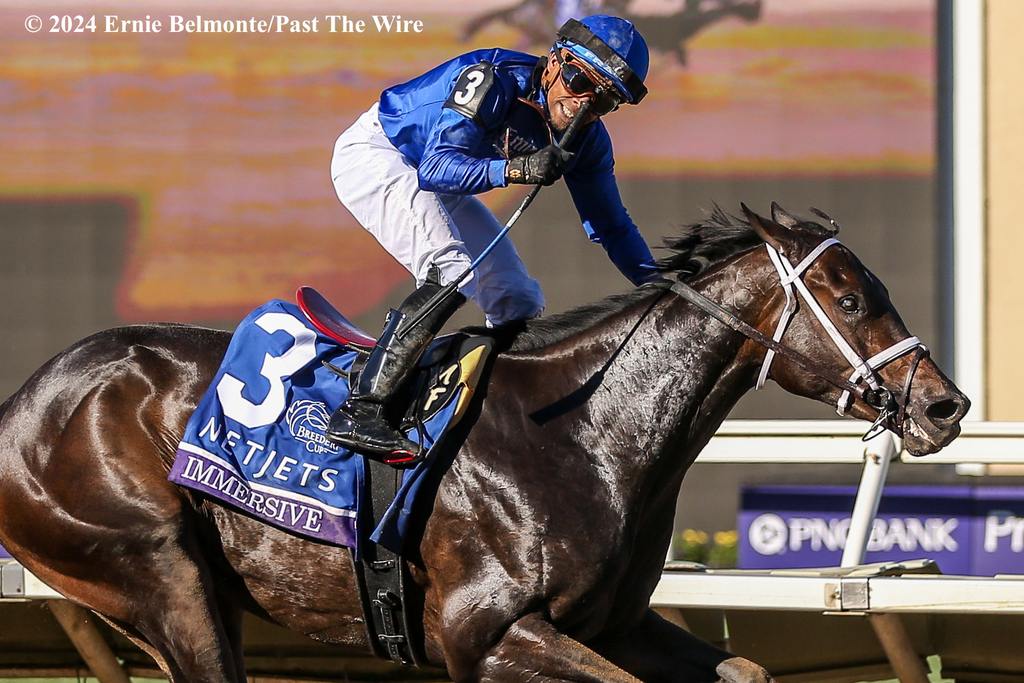
CAW players just may be keeping horse racing alive.
By Jon Stettin Op/Ed
What Is Computer Assisted Wagering (CAW)?
Computer Assisted Wagering (CAW) refers to the use of sophisticated algorithms, real-time data processing, and automated betting systems by high-volume professional wagering groups to place large-scale bets on horse racing. CAW players are typically granted rebates, direct data feeds, and betting access that far exceed what’s available to the average bettor.
CAWs are often misunderstood as a faceless or fully automated system for a team or syndicate, but in reality, it’s operated by individual account holders who have contractual agreements with high-volume rebate Advance Deposit Wagering (ADW) platforms. These individuals are granted access to the preferred betting rates, data feeds, and technology tools referenced above, but in exchange, they must adhere to strict rules and protocols set by the high volume ADW and host tracks. While the account holder may employ analysts, coders, or betting assistants to help manage operations, they alone are ultimately responsible for all activity on the account. Violations of terms—such as misuse of data or manipulation of pool timing—can result in suspension or termination of privileges. For example: CAW players are not permitted to cancel any wager they make at any time once placed. No exceptions. When a late scratch occurs many of us often scramble to cancel and restructure our tickets. A CAW player does not have that liberty. This is not to suggest it levels the playing field.
A deeper look into this often-secretive world was offered by us and yours truly at Past the Wire, which became the first racing media outlet (at least that we’re aware of) to directly interview a CAW player in its article “Horse Racing’s True Lifeline.” The piece offered rare insights into how these players operate, the pressures they face, and their role in the economic engine of the sport. By humanizing CAW participants and clarifying how the system works contractually, the article helped shift the narrative from faceless manipulation to a more nuanced understanding of their place in the modern wagering ecosystem.
While CAW has undeniably increased overall betting handle across the industry, its rise has also introduced fundamental challenges—particularly for the traditional “retail” bettor. The result is a growing divide between handle growth and fan engagement.
How CAW Increases Handle – But at a Cost
The benefits of CAW are primarily seen in the raw numbers:
- CAW bettors now account for as much as 30–40% of total pari-mutuel handle at some tracks.
- These groups pump hundreds of millions of dollars into pools annually.
- Because their bets are often made in the final seconds before post time, they can drive significant late pool shifts.
This influx of money has boosted total handle, keeping some racetracks and ADWs afloat in an era of declining mainstream interest.
However, there’s a dark side. CAW betting activity has distorted tote boards, caused odds to shift dramatically after the bell, and eroded trust among everyday players. For fans wagering $2 or $20 at a time, it feels increasingly like a rigged game.
Retail bettors—those who once made up the heart of the sport—are wagering less and less. Many cite last-second odds drops and the growing perception of unfair access as reasons for their departure.
CAW Handle Grows While Retail Handle Shrinks
According to industry figures:
- CAW handle has grown steadily over the last 10 years, even through pandemic disruptions.
- Meanwhile, non-CAW or “retail” handle has declined year after year.
- In some cases, total handle appears stable or rising, but only because CAW wagers are filling the void left by the shrinking fan base.
This shift is unsustainable long term. Racing becomes a financial engine for a small number of institutional bettors, rather than a mass-consumption sport supported by fans and casual players.
What Happens if CAW Is Eliminated?
Some in the industry have called for drastic limitations or even elimination of CAW access. But doing so is a double-edged sword:
Pros:
- More stable and transparent tote boards, restoring faith among retail players.
- Potential for a return to a more fan-focused betting ecosystem.
- Opportunities to attract new fans and bettors who feel they can win on a level playing field.
Cons:
- Immediate and steep drop in handle, potentially in the hundreds of millions annually.
- Some tracks and ADWs could face financial collapse without CAW-derived liquidity.
- Without replacing that lost handle, purses may drop, and the quality of racing could decline.
The industry must weigh short-term pain against long-term survival. Relying too heavily on CAW is a short-term fix that may alienate the very customers needed to rebuild the sport. Maybe the shot callers have already quietly waived the white flag and are just riding things out so to speak.
Can the Industry Move Forward?
Horse racing’s future lies in balance and reform. Here are potential strategies:
- Regulate CAW access, such as limiting last-second betting and increasing transparency.
- Create separate betting pools for CAW and retail bettors.
- Improve data equity by offering better access and tools to everyday players.
- Reinvest CAW-derived revenue into fan education, marketing, and innovation.
Most of us are aware of the efforts made by NYRA and Del Mar in an attempt to appease existing retail players. Reportedly they have been locked out of certain pools. Del Mar stated publicly that they had incentivized CAWs to bet win early but did not state what those incentives were. Obviously, that did not work. Personally, I don’t buy that they are not in any pool they choose to be in. The CAW and the high rebates it is afforded may be locked out of certain pools and or wagers, but who would argue there are not ways to wager clandestine if a model tells the owner this is a great play. It remains to be seen if closing the win pool with two minutes has a big impact. The tote systems who nobody wants to put money in are so outdated the money may still come in too slow.
Ultimately, racing must decide if it wants to be a niche investment tool for elite syndicates—or a vibrant spectator sport with broad public appeal. One only has to go as far back to the 80’s to see horse racing as the number one spectator sport in the USA. I’m not even sure if it currently makes the long list anywhere.
Final Thoughts
Computer Assisted Wagering has helped prop up the numbers in horse racing, but at a heavy cost to the soul of the sport. As CAWs grows and retail players vanish, the industry faces a stark choice: reform or fade. Without everyday fans, there is a questionable future for racing—no matter how big the handle gets.



